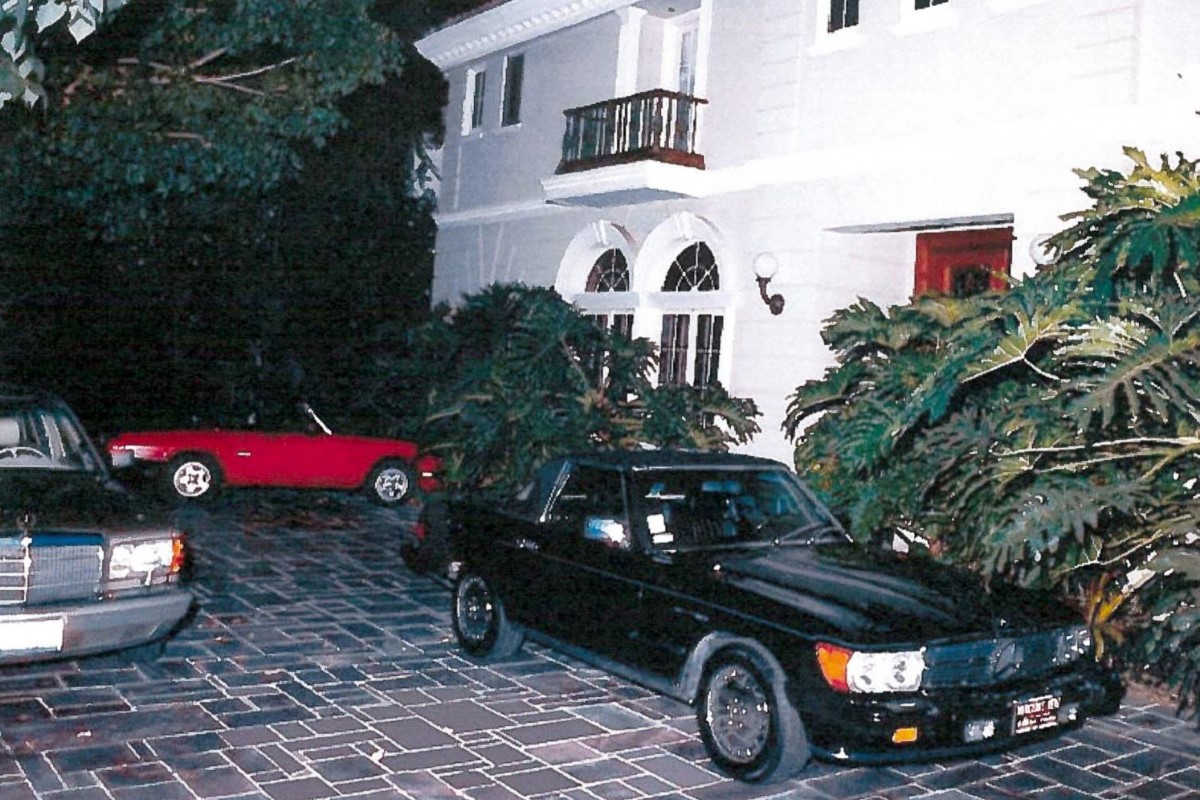
Two young men from Beverly Hills shocked America in 1989 when they were charged with the murder of their parents, Jose and Kitty Menendez.
What began as a sudden family tragedy soon revealed a deeper story of wealth, abuse, and power, unfolding on national television in one of the most-watched trials of the decade.
Decades later, the Menendez brothers remain behind bars, their fortune gone and their legacy defined by scandal and courtroom drama.
Their case still fuels documentaries, debates, and headlines, reminding the public how privilege and violence can destroy even the most powerful families.
Keep reading for the full story behind their lost empire and net worth in 2025.
| Names | Lyle Menendez (b. 1968), Erik Menendez (b. 1970) |
| Parents | Jose Menendez (entertainment executive), Kitty Menendez (homemaker) |
| Crime | Murder of parents on August 20, 1989 in Beverly Hills, California |
| Conviction | First-degree murder, 1996 |
| Sentence | Life in prison without possibility of parole |
| Estate Value (1989) | Estimated at 14 to 14.5 million USD |
| Current Status | Incarcerated, serving sentences in California prisons |
| Net Worth (2025) | Effectively zero, with no control over estate or assets |
The Murders That Shook the Wealthy Enclave of Beverly Hills

On a warm Sunday night in August 1989, gunfire ripped through one of the grand homes of Beverly Hills.
Jose Menendez, a powerful executive in the entertainment business, and his wife, Kitty, were left dead in their den.
Their bodies, riddled with shotgun blasts, revealed a crime scene so brutal that even seasoned officers struggled to describe it.
The killings were precise, deliberate, and personal.
The First Hours of the Case
Detectives initially considered revenge from business circles. Jose had enemies in the corporate world.
Yet suspicion shifted as investigators studied the sons. Lyle and Erik displayed behavior that stood apart from grieving children.
They bought expensive clothes, went on trips, and made public appearances that raised eyebrows.
Fallout in Beverly Hills
For residents, the murders shattered the illusion of safety in their exclusive enclave.
Media vans lined the streets, helicopters circled overhead, and neighbors whispered about what secrets might hide behind guarded gates.
Inside the Trial That Turned Into a National Obsession
Television changed the Menendez case. Cameras rolled inside the courtroom, pulling millions of Americans into the drama.
Viewers watched as two young men sat at the defense table, accused of murdering their parents.
They were wealthy, privileged, and they were fighting for their lives in front of a divided nation.
Trial One: Deadlock in the Jury Box
The first trial began in 1993. Prosecutors pressed the theory of financial motive, while defense attorneys described years of abuse at the hands of Jose. Jurors could not agree.
Some believed the brothers’ accounts of fear and trauma, while others saw greed and manipulation.
The result was a mistrial.
Trial Two: Conviction and Final Sentences
By 1996, the second trial brought sharper arguments and stricter rules on cameras. Both brothers were convicted of first-degree murder.
The sentence was life in prison with no chance of parole.
The Courtroom as Entertainment
- Coverage dominated cable news and daytime TV
- Talk shows debated abuse claims versus financial greed
- The public treated the trial as both crime reporting and spectacle
This trial shaped how America consumes true crime today. It blurred the line between justice and entertainment.
Lavish Spending Sprees and the Rush to Burn Through a Fortune

Money trails do not lie, and in the Menendez case, they told a story as loud as the gunshots.
Within weeks of their parents’ deaths, the brothers began drawing heavily on estate funds.
Luxury cars appeared in driveways, designer suits filled closets, and cross-country trips piled up on credit card bills.
Purchases That Drew Scrutiny
- Lyle acquired a Porsche, expensive watches, and a Los Angeles restaurant stake
- Erik bought a Jeep, private lessons in tennis, and fine clothing
- Both poured money into entertainment, gambling, and overseas travel
How Prosecutors Used the Records
When prosecutors laid out the receipts, they framed them as a motive.
Nearly $700,000 in less than half a year painted a picture of entitlement.
Jurors saw young men who killed for access to an estate and then flaunted it.
Legacy of the Spending Evidence
Even today, judges reviewing new appeals refer to those records. The spree is often cited as one of the clearest demonstrations of intent.
The Menendez brothers are remembered for a brutal crime that shook America and for a reckless waste of wealth that made their claims of fear harder to believe.
Lawyers, Taxes, and the Slow Disappearance of a Family Estate
The estate of Jose and Kitty Menendez looked enormous in 1989. Reports put its value at over 14 million dollars, spread across homes, investments, and business stakes.
Yet within a few short years, that fortune was gutted by lawyers, accountants, and the endless bleed of court expenses.
How the Estate Was Consumed
- Court documents from the 1990s show millions spent on criminal defense teams, expert witnesses, and private investigators.
- Legal bills exceeded 1.5 million dollars by the time of the second trial.
- Federal and state taxes stripped away another large portion, leaving little room for long-term security.
Property Sales and Fire-Sale Prices
The Beverly Hills mansion was sold in 1991 for about 3.6 million, far less than it had been valued at before the murders.
Another Calabasas property went for just under 2 million in 1994. Buyers circled like vultures, knowing the family needed cash to cover mounting costs.
Where It Stands in 2025
None of that wealth survived for the brothers. Every appeal they file points back to financial records that show a collapse.
How the Slayer Statute Brought a Final End to Their Financial Future
California law is ruthless on one point: a person convicted of murdering a relative cannot inherit from that victim.
Known as the Slayer Statute, it erased any chance that Lyle and Erik Menendez would legally control their parents’ estate.
The Legal Barrier Explained
- Convicted killers lose all rights to insurance payouts, trust funds, and property.
- Courts applied this directly after the 1996 guilty verdicts, cutting the brothers off from every possible financial avenue.
- Even life insurance policies, where they were listed as beneficiaries, became worthless to them.
Without the Slayer Statute, appeals over inheritance could have dragged on for decades. With it, the door shut permanently.
Every recent filing in 2023 and 2024 that touches on money issues is dismissed because the law is so clear.
Life Behind Prison Walls and the Strange Attraction of Infamy
The Menendez brothers have spent more than thirty years in California prisons. Their daily lives are ordinary by inmate standards, yet their names still spark global fascination.
In 2025, they remain behind walls, but their story continues to reach far beyond the prison gates.
Where They Are Housed
- Both are at Richard J. Donovan Correctional Facility in San Diego.
- Reunited in 2018 after years in separate prisons, they now see each other regularly during meals and recreation.
- They live in separate cells, subject to the same schedules and limits as other inmates.
How Their Sentences Changed in 2025
In May 2025, a judge reduced their punishment from life without parole to fifty years to life. That decision created a storm of reaction.
Supporters framed it as long long-overdue acknowledgment of abuse claims.
Critics saw it as dangerous leniency for convicted killers.
Both hearings were held in late August, and parole was denied for both brothers. They will not be eligible again for at least three more years.
Misconduct Records and Parole Obstacles
The brothers’ prison files hold disciplinary marks.
Erik was cited for violations tied to behavior in custody.
Lyle was written up for unauthorized phone use and other infractions.
For the parole board, these were not small details. They weighed heavily against the argument that the brothers had changed.
Public Fascination With Inmates Turned Symbols
Lyle married twice during incarceration, drawing public attention each time.
Erik maintained ties with outside advocates who press for recognition of the abuse claims.
Photos, letters, and interviews surface online, renewing debate.
Their story is a record of murder that turned into a spectacle where crime, punishment, and celebrity mixed in American culture.
Menendez Brothers Net Worth 2025 and the Truth About What Is Left
The financial story behind the Menendez case is as compelling as the crime itself.
In 1989, reports placed Jose and Kitty Menendez’s combined estate at roughly 14 million dollars.
On paper, it looked vast: prime real estate, corporate holdings, insurance policies, and valuable personal property.
Yet within a few years, that figure collapsed under the weight of legal fees, taxes, and distressed sales.
By 2025, there is no wealth left for Lyle or Erik. The fortune that once seemed secure has been reduced to historical footnotes in probate records and trial transcripts.
Estate Breakdown at the Time of Death
- Beverly Hills mansion: valued at over five million dollars before the murders, later sold in 1991 for about 3.6 million.
- Calabasas property: sold in 1994 for just under two million, well below the expected value.
- Corporate assets: Jose held stock in LIVE Entertainment and other ventures, though values dipped with market shifts and liquidation.
- Life insurance: policies worth millions were voided by California’s Slayer Statute once the brothers were convicted.
- Personal property: luxury cars, jewelry, and household items were listed and in many cases, auctioned to cover debts.
The Rapid Drain of Funds
- Within six months of the murders, investigators documented more than $700,000 spent on cars, clothes, trips, and a restaurant investment in New Jersey.
- Defense costs mounted fast. By the mid-1990s, attorneys, investigators, and expert witnesses had consumed more than 1.4 million dollars.
- Estate taxes and administrative fees stripped away several million more. Probate filings show payments to federal and state authorities as one of the largest drains on remaining assets.
- Properties sold under pressure returned less than their appraised values, creating losses that further hollowed out the estate.
Accounting of What Remained
By the close of the 1990s, liquid funds were largely gone.
Inventories showed some household furnishings, jewelry, and small cash reserves, but nothing substantial.
California courts confirmed that under the Slayer Statute, the brothers had no right to inherit, leaving the estate to be divided among creditors and extended family claims.
Net Worth in 2025
- No evidence of any hidden reserves or continuing income tied to the estate.
- Court documents and public filings consistently show the brothers with no financial assets.
- Their effective net worth today is zero. They survive entirely on the structure of the prison system, with no control over money and no access to family wealth.
Impact on Legal Debate
The collapse of the estate has shaped every discussion around motive.
- Prosecutors use the spending spree and rapid depletion of assets to argue that greed was central to the crime.
- Defense teams stress that estate loss stemmed from taxes, legal fees, and forced sales rather than deliberate squandering.
- Public opinion continues to split, with some seeing financial ruin as proof of premeditation and others viewing it as an inevitable result of the trial process.
Final Thoughts
The Menendez brothers live out their sentences with no wealth and no path back to the lives they once knew. Their estate is gone, their appeals have failed, and their days are measured inside prison walls.
The case stays alive because it carries power on its own, a story of family collapse, violence, and a trial that once gripped the nation.
That is where it stands in 2025, a crime locked in history but never forgotten.
















